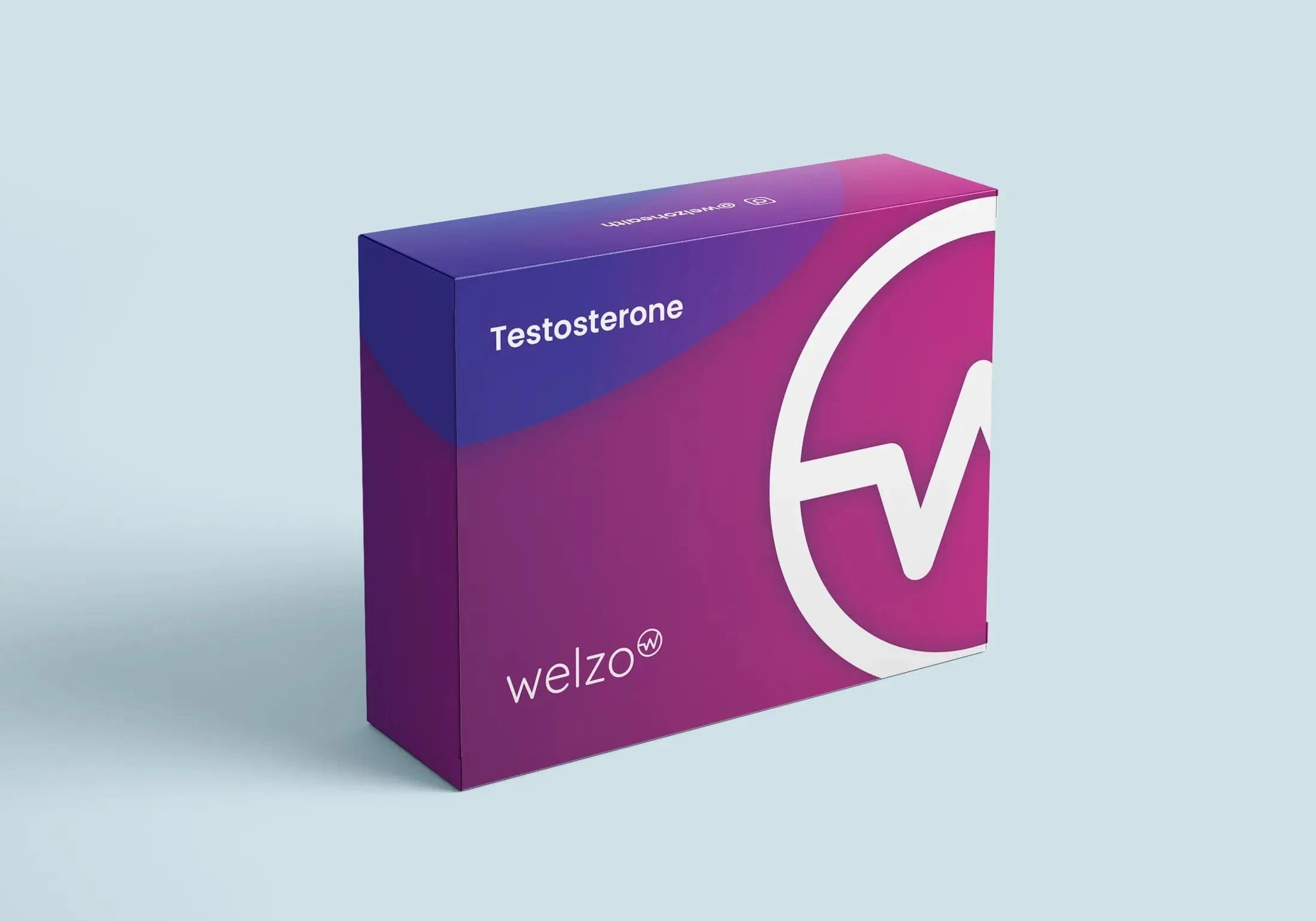The Role of Testosterone in the Female Body


Testosterone, often misconceived as a strictly male hormone, plays an integral role in female physiology as well. This naturally occurring steroid hormone belongs to a class of molecules known as androgens. In females, testosterone is produced predominantly in the ovaries and the adrenal glands. To clarify the misconception further, while males do produce higher levels of testosterone, the presence of this hormone in females is essential for various physiological functions. For instance, it aids in the regulation of menstrual cycles, promotes bone health, and can affect mood and libido. A 2019 study conducted by the University of Edinburgh suggests that females with low testosterone levels might face issues related to bone density, muscle mass, and even mood disorders says Dr. Sarah Smith, University of Edinburgh.
One of the common misconceptions about testosterone is that it's exclusively a male hormone, rendering it irrelevant to female health. This couldn't be further from the truth. In reality, women produce testosterone throughout their lives, albeit in smaller quantities than men. The hormone plays a pivotal role in a woman's overall health and wellbeing. For example, testosterone assists in the development of lean muscle mass and can influence body fat distribution. Its presence is also linked to libido and sexual arousal. When levels are imbalanced, it can lead to symptoms like fatigue, weight gain, or mood disturbances. Yet, due to societal and cultural norms, discussions around testosterone have always been male-centric. "Our societal lens often skews our understanding of hormones, but it's essential to remember that both sexes have a complex hormonal interplay, crucial for optimal health", says Dr. Laura McGevna, a renowned endocrinologist.
The primary sites of testosterone production in women are the ovaries and adrenal glands. The ovaries, responsible for producing eggs and releasing them during the menstrual cycle, secrete small amounts of testosterone. This release aids in maintaining a healthy reproductive system, bone health, and muscle mass. On the other hand, the adrenal glands, situated above the kidneys, contribute to a smaller portion of the total testosterone. Still, their role remains pivotal. "It's fascinating how these tiny glands play such a crucial role in balancing a woman's testosterone levels, affecting everything from mood to metabolism", states Dr. Lisa Daniels, an expert in adrenal gland physiology.
Diving deeper into the physiology of testosterone production, the journey begins with cholesterol. Yes, the same cholesterol often vilified in health circles is the precursor to many vital hormones, including testosterone. This intricate process, called steroidogenesis, commences in the mitochondria of cells. Here, cholesterol undergoes a series of transformations, thanks to various enzymes, ultimately producing pregnenolone. This molecule then travels through multiple pathways, leading to the synthesis of several steroid hormones, one of which is testosterone. To put it in perspective, think of cholesterol as the raw clay, moulded and sculpted through various stages, finally resulting in the creation of a beautiful statue, in this case, testosterone. "Cholesterol's role in the formation of testosterone is a shining example of nature's genius, turning a simple molecule into something so vital", says Dr. Rebecca Turner, a molecular biologist with a focus on endocrinology,. In conclusion, it's crucial to understand and appreciate the nuanced role testosterone plays in female physiology. By doing so, we not only challenge age-old misconceptions but also pave the way for better health outcomes for women across the UK.

Buy Testosterone Blood test online here.
Testosterone is paramount when it comes to influencing female sexual desire. Contrary to popular belief that only oestrogens play a part in a woman's libido, testosterone has been shown to be crucial in modulating sexual arousal. For many women, a decrease in testosterone levels, particularly after menopause or due to certain medical conditions, can lead to reduced sexual desire. "Just as it does in men, testosterone in women works intricately with the brain's chemistry to ignite sexual desire", states Dr. Catherine Lewis, a sexual health expert in the UK.
Beyond libido, testosterone contributes significantly to vaginal health. The hormone aids in maintaining the thickness of the vaginal wall, its elasticity, and natural lubrication. Furthermore, it plays a role in ensuring vaginal sensitivity, thus contributing to sexual satisfaction. When there's a decline in testosterone, some women might experience vaginal dryness or reduced sensation, says Dr. Miriam Hart, a leading gynaecologist.
Testosterone plays an undeniable role in muscle development and strength. In females, adequate testosterone levels are linked to lean muscle mass, which in turn assists in overall strength and stamina. According to a study conducted by the University of Cambridge, women with higher natural testosterone levels demonstrated increased muscle strength compared to those with lower levels.
Bone health is another area where testosterone showcases its influence. The hormone aids in the absorption of calcium, ensuring bones remain dense and strong. With declining testosterone levels, often seen in post-menopausal women, there's an increased risk of osteoporosis and fractures, says Dr. Elise Morgan, an expert in osteology.
Emerging research is throwing light on how testosterone can impact mood and emotional well-being in women. Low levels might be linked with mood swings, anxiety, and even depression in some. "Balanced testosterone levels can act as a mood stabilizer, helping women navigate emotional challenges more effectively", states Dr. Hannah Clark, a neuropsychologist.
Cognitive functions, including memory retention, attention, and spatial abilities, might be influenced by testosterone. Preliminary studies indicate that women with optimal testosterone levels may experience enhanced cognitive abilities, especially in areas like verbal memory.
Testosterone in women plays a role in fat distribution, primarily influencing where fat is stored in the body. Typically, it promotes a more even distribution and can enhance metabolic rate, making weight management slightly more straightforward for those with balanced testosterone levels.
There's mounting evidence suggesting testosterone's protective effects against cardiovascular diseases. Women with balanced levels might benefit from a healthier lipid profile and reduced inflammation, contributing to heart health, according to Dr. Ian Gilbert, a cardiologist.
Testosterone dictates hair growth patterns, particularly facial and body hair. Elevated levels can lead to hirsutism, a condition where women experience male-pattern hair growth.
Testosterone can increase the skin's oil production. While this can render the skin more supple, it can also lead to acne outbreaks, especially in women with polycystic ovarian syndrome (PCOS), says Dr. Rachel Shaw, a dermatologist.
Throughout a woman's life, testosterone levels fluctuate. During menstruation, levels might slightly dip. In pregnancy, there's a surge, especially in the third trimester. However, the most significant decline is noticed during menopause, leading to various systemic impacts.
As women age, hormonal shifts, including changes in testosterone levels, can have widespread systemic effects. From bone density, muscle mass, to even emotional well-being, the ebb and flow of this hormone play a pivotal role in a woman's health journey. In wrapping up, understanding testosterone's multifaceted roles in women is essential for holistic health. As research continues to evolve, it's clear that this hormone, often associated exclusively with men, holds significant sway in the health and well-being of women too.
Hyperandrogenism is often primarily associated with Polycystic Ovary Syndrome (PCOS). However, it's essential to understand that there are other conditions and factors responsible for elevated androgen levels in females.
When we delve deep into hyperandrogenism, the signs are varied and often quite subtle. Common symptoms include severe acne, increased hair growth in typically male-pattern areas, scalp hair thinning, and irregular menstrual cycles. But, these symptoms can also mask as regular hormonal fluctuations or other medical conditions. Therefore, it's crucial to differentiate them from other potential disorders. "Symptoms of hyperandrogenism can often be misleading, making it imperative for medical professionals to conduct thorough examinations and tests", says Dr. Eleanor Matthews, a renowned endocrinologist based in London. For instance, while PCOS is a common cause of hyperandrogenism, other potential causes include adrenal gland disorders, specific tumours that produce androgens, and certain genetic disorders. It's always advisable to understand the root cause of hyperandrogenism for accurate treatment.
Apart from genetic disorders or tumours, various other factors can influence androgen levels in females. Stress, for instance, plays a significant role in hormonal imbalances. Chronic stress can lead to the adrenal glands overproducing cortisol, which in turn can cause an overproduction of androgens. "Lifestyle choices, particularly those related to stress and diet, can inadvertently contribute to hyperandrogenism", says Dr. Alan Smith, a hormone specialist at Manchester University. Additionally, conditions like Cushing's syndrome or congenital adrenal hyperplasia can lead to elevated androgen levels.
On the opposite end of the spectrum from hyperandrogenism lies hypoandrogenism, a condition characterised by decreased levels of testosterone in females. While often less discussed, it's equally as significant in terms of its effects on the female body.
Hypoandrogenism isn't just about having a low testosterone level; it's about the impact such levels have on one's physical and emotional well-being. Among the typical signs are reduced libido, fatigue, depression, and diminished well-being. These symptoms, though shared with other conditions, become prominent when combined. While age is a leading factor, with testosterone levels naturally declining as women get older, other causes can include surgical removal of the ovaries, adrenal disorders, and pituitary gland issues. "Many women don't realise the importance of testosterone. It's not just a 'male' hormone; it plays a crucial role in women's health too", asserts Dr. Sarah Williams, an endocrinologist at the Oxford Clinic.
Measuring testosterone levels in women is crucial for accurate diagnosis and treatment of a range of hormonal disorders. There are a few common techniques employed in the UK medical industry.
1. Serum Testosterone Test: This is the standard method which involves a simple blood test. It measures the amount of testosterone that's circulating in the bloodstream.
2. Free Testosterone Test: Only about 1-4% of the testosterone in a woman’s body circulates freely. This test measures that tiny fraction which isn’t bound to proteins.
3. Saliva Testosterone Test: Some researchers believe saliva testing might be a more accurate reflection of bioavailable testosterone, especially for women. However, its use is more limited compared to serum tests. "While blood tests remain our gold standard, the rise of saliva testing shows promise, particularly for specific patient categories", mentions Dr. Elizabeth Richards from the London Hormonal Laboratory.
Achieving a precise measure of testosterone levels in women can be tricky. Female testosterone levels are about ten times lower than in men, so the tests must be ultra-sensitive. Timing is also a factor; testosterone levels can fluctuate during the day and across menstrual cycles. Medications, health conditions, and even the lab techniques can influence results. "There's an art to interpreting these tests. You have to consider the entire clinical picture," suggests Dr. Emily Clarke from Bristol Endocrinology Centre.
Testosterone therapy isn't just for men. Women might be prescribed testosterone for a variety of conditions, such as hypoandrogenism, reduced sexual desire post-menopause, or after surgical removal of the ovaries. "It's vital to establish clear indications for testosterone therapy. It's not a one-size-fits-all solution", notes Dr. Peter Thompson from the Edinburgh Hormone Clinic.
Therapeutic testosterone use can offer benefits like improved mood, increased libido, and better muscle and bone health. However, side effects, like acne, hair growth, and voice deepening, can occur. Close monitoring is essential to ensure the dose is right and to mitigate potential adverse effects. "Regular check-ins and tests ensure that therapy remains beneficial without causing undue side effects," states Dr. Lorraine Fitzgerald from the Liverpool Health Institute.
Testosterone doesn't act in isolation. Its interplay with other hormones, like oestrogen and progesterone, impacts various bodily functions. For instance, an imbalance between oestrogen and testosterone can lead to issues like menstrual irregularities. "Hormones are like an orchestra; each plays a part, but it's the harmony that creates health," poetically puts Dr. Neil Harrison from the Birmingham Wellness Centre.








Plus get the inside scoop on our latest content and updates in our monthly newsletter.